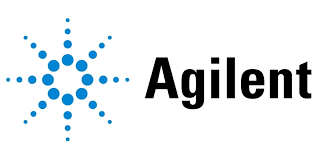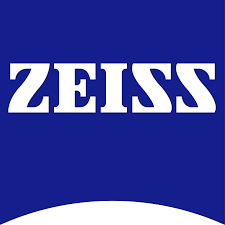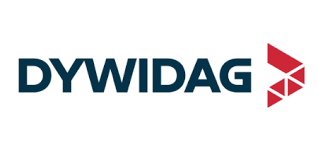Connected Rail Market Report
Published Date: 15 December 2025 | Report Code: connected-rail
Connected Rail Market Size, Share, Industry Trends and Forecast to 2033
This report provides an in-depth analysis of the Connected Rail market from 2023 to 2033, offering insights into market size, growth trends, regional dynamics, and key players, alongside segment-specific performance and technological advancements.
| Metric | Value |
|---|---|
| Study Period | 2023 - 2033 |
| 2023 Market Size | $11.00 Billion |
| CAGR (2023-2033) | 7.8% |
| 2033 Market Size | $23.85 Billion |
| Top Companies | Siemens AG, Bombardier Transportation, Alstom, Hitachi Rail Limited, Thales Group |
| Last Modified Date | 15 December 2025 |
Connected Rail Market Overview
Customize Connected Rail Market Report market research report
- ✔ Get in-depth analysis of Connected Rail market size, growth, and forecasts.
- ✔ Understand Connected Rail's regional dynamics and industry-specific trends.
- ✔ Identify potential applications, end-user demand, and growth segments in Connected Rail
What is the Market Size & CAGR of Connected Rail market in 2023?
Connected Rail Industry Analysis
Connected Rail Market Segmentation and Scope
Tell us your focus area and get a customized research report.
Connected Rail Market Analysis Report by Region
Europe Connected Rail Market Report:
Europe's Connected Rail market stands at $2.74 billion in 2023, with projections to grow to $5.94 billion by 2033. The push for sustainable transportation and regulatory mandates for digital enhancements in rail operations significantly drive this growth.Asia Pacific Connected Rail Market Report:
In 2023, the Connected Rail market in the Asia Pacific region is valued at approximately $2.39 billion, projected to reach $5.17 billion by 2033. This growth is fueled by significant investments in smart city initiatives, urban transit improvements, and increasing adoption of automated systems.North America Connected Rail Market Report:
North America leads the Connected Rail market with a valuation of $4.05 billion in 2023, expected to reach $8.77 billion by 2033. The region benefits from a mature rail network and significant federal investments aimed at modernizing railway infrastructure and enhancing safety measures.South America Connected Rail Market Report:
South America's Connected Rail market was valued at $0.89 billion in 2023 and is expected to nearly double to $1.94 billion by 2033. This increase is driven by growing urbanization and infrastructure development projects that focus on enhancing public transport systems.Middle East & Africa Connected Rail Market Report:
In 2023, the Connected Rail market in the Middle East and Africa is valued at $0.93 billion and is anticipated to grow to $2.02 billion by 2033 due to ongoing investments in transportation infrastructure and urban developments.Tell us your focus area and get a customized research report.
Connected Rail Market Analysis By Technology
Global Connected Rail Market, By Technology Market Analysis (2023 - 2033)
The Connected Rail market segmented by technology showcases a variety of solutions including IoT applications, safety and security systems, cloud computing, and data analytics services. For instance, IoT alone is projected to grow from a market size of $7.45 billion in 2023 to $16.14 billion by 2033, driven by enhanced data-driven decision-making capabilities in rail operations.
Connected Rail Market Analysis By Application
Global Connected Rail Market, By Application Market Analysis (2023 - 2033)
In terms of application, passenger services, fleet management, and safety & security systems represent major growth sectors. Passenger services have a projected increase from $1.16 billion in 2023 to $2.53 billion by 2033, highlighting the growing focus on customer experience enhancements.
Connected Rail Market Analysis By Component
Global Connected Rail Market, By Component Market Analysis (2023 - 2033)
The component analysis reveals hardware, software, and services as critical areas of growth. Hardware remains the largest segment with $7.45 billion in 2023, reflecting its foundational role in connected systems, set to expand significantly by 2033.
Connected Rail Market Analysis By End User
Global Connected Rail Market, By End-User Market Analysis (2023 - 2033)
Government entities and transport operators represent the primary end-users of connected rail solutions, with government spending projected to grow from $7.45 billion in 2023 to $16.14 billion by 2033, indicative of comprehensive investment strategies in infrastructure upgrades.
Connected Rail Market Trends and Future Forecast
Tell us your focus area and get a customized research report.
Global Market Leaders and Top Companies in Connected Rail Industry
Siemens AG:
A key player in advanced rail solutions, Siemens offers digital services that enhance operational efficiency and passenger experience.Bombardier Transportation:
Known for innovative rail solutions, Bombardier focuses on integrating smart technologies into their transit systems, driving connectivity.Alstom:
Alstom specializes in rail transport systems and is at the forefront of technological advancements with their smart infrastructure solutions.Hitachi Rail Limited:
Hitachi Rail is recognized for its high-speed rail systems and commitment to integrating IoT for enhanced operational performance.Thales Group:
Thales Group provides cutting-edge signaling and safety solutions, essential for advancing Connected Rail technologies.We're grateful to work with incredible clients.









FAQs
What is the market size of connected Rail?
The connected rail market is currently valued at approximately $11 billion in 2023, with a projected compound annual growth rate (CAGR) of 7.8%. This growth underscores the increasing importance of technology-driven solutions in the rail transport sector.
What are the key market players or companies in this connected Rail industry?
Key players in the connected rail market include major railway corporations, technology providers specializing in IoT and data analytics, and equipment manufacturers. Notable companies may also include those involved in safety systems and cloud computing solutions tailored for rail operations.
What are the primary factors driving the growth in the connected rail industry?
Growth in the connected rail industry is propelled by technological advancements, rising demands for improved safety measures, efficient operations, and enhanced passenger services. Additionally, governments are investing in infrastructure, seeking to reduce carbon emissions and improve public transportation reliability.
Which region is the fastest Growing in the connected rail market?
The fastest-growing region in the connected rail market is projected to be North America, with a market size expansion from $4.05 billion in 2023 to approximately $8.77 billion by 2033. Following closely are Europe and Asia-Pacific, reflecting significant infrastructural developments.
Does ConsaInsights provide customized market report data for the connected rail industry?
Yes, ConsaInsights offers customized market report data tailored to specific needs within the connected rail industry. Clients can request detailed insights that align with their strategic goals, including segmented data on various regional markets and operational factors.
What deliverables can I expect from this connected rail market research project?
Deliverables from the connected rail market research project include comprehensive reports detailing market size, growth projections, regional analysis, and segment breakdowns. Additionally, clients receive strategic recommendations and competitive landscape insights to support informed decision-making.
What are the market trends of connected rail?
Current trends in the connected rail market include the integration of IoT technologies for real-time data analytics, growing investments in smart rail infrastructure, and heightened focus on passenger experience improvements and operational efficiency, as stakeholders shift toward more sustainable practices.

